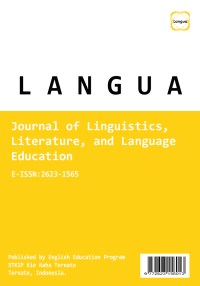Unravelling the Swear Words Uttered by the Characters in Suicide Squad Movie from Pragmatic Perspective
Abstract
Nowadays, the use of profanity is becoming more widespread, and it seems to be particularly common among teenagers. However, swear words do not have a fixed, universal meaning, as their usage is context-dependent and pragmatic. A single swear word can have multiple meanings and functions depending on the situation. This study aims analyze the pragmatic purposes behind their usage, based on the themes proposed by Ljung in 2011. The research adopts a qualitative content analysis method since the data comprises the characters' spoken words in the movie. The data collection process involves gathering relevant information about swear words, and once sufficient material is obtained, the movie is rented from YouTube. The data analysis steps involve data reduction, data displaying, and finally drawing conclusion. The findings reveal that the functions of the swear words, replacive swearing emerges as the most frequently used function among the characters, followed by name-calling, and the third are expletive interjection, and emphasis with the same occurrence frequency, anaphoric use of epithet, adjectives of dislike, and the last are unfriendly suggestions, as well as adverbial/adjectival intensifiers which share the same occurrence frequency. The results indicate that swear words are heavily used in the Suicide Squad movie. This research provides a rich theoretical and empirical framework for future research, especially concerning the study of swear words.
Downloads
Copyright (c) 2023 Gabriella Kristina Handayani, Endar Rachmawaty Linuwih, Eka Fadilah

This work is licensed under a Creative Commons Attribution 4.0 International License.
Authors who publish with Langua Journal of Linguistics, Literature, and Language Education agree to the following terms:
- Authors retain copyright and grant the journal right of first publication with the work simultaneously licensed under a Creative Commons Attribution License that allows others to share the work with an acknowledgement of the work's authorship and initial publication in Langua.
- Authors are able to enter into separate, additional contractual arrangements for the non-exclusive distribution of the journal's published version of the work (e.g., post it to an institutional repository or publish it in a book), with an acknowledgement of its initial publication in Langua.
- Authors are permitted and encouraged to post their work online (e.g., in institutional repositories or on their website) prior to and during the submission process, as it can lead to productive exchanges, as well as earlier and greater citation of published work.






